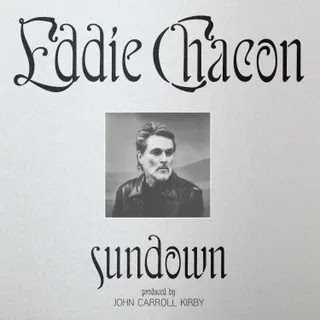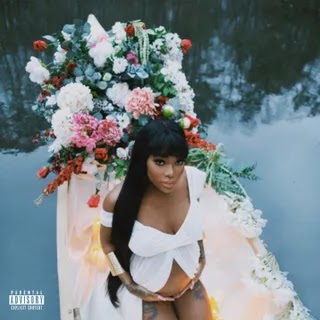Spanning tender acoustic ballads, silky R&B performance, and contemporary urbano swagger, the singer-songwriter and multi-instrumentalist’s second LP unites the facets of his own artistic identity.
Some electronic musicians use a handful of aliases, recognizing that their fans—and the industry at large—can have difficulty reconciling new sounds coming from familiar names. Jazz artists form fresh ensembles to explore different lanes. Punks start new bands. None of those options seem to suit Gabriel Garzón-Montano. Instead he’s populated his latest album, Agüita, with three characters, each a different facet of a three-dimensional self-portrait that examines the origins of his sense of self. The son of a Colombian father and French mother, born and raised in Brooklyn, he’s at once of Europe and Latin America, of New York and the United States. The first two characters, the “wistful impressionist” rooted in European theatre and fashion and the “leading man” studied in American soul and R&B, will be familiar to those who’ve heard his first two records, the 2014 EP Bishouné: Alma del Huila and the 2017 LP Jardín.
But the third, an “urbano hitmaker” with the contemporary swagger of a reggaetonero, is something new, an illuminating view into how GGM constructs his own id. Debuted in a stunning medley for the Colors video performance series, the character feels like connective tissue between the others, slithering across the sexual spectrum as he tries on urbano’s egocentric hypermasculinity, minus the misogyny. These are also his first songs in Spanish; the challenge of writing in another language is amplified by the fact that he’s not just singing, but rapping, and the flow en español comes with its own unique challenges of diction and cadence. His fractured sense of self serves him well here, as he uses second-generation Spanglish to connect troublesome bars.
Still, it doesn’t always work. The “look like a book/stack like books” line on “Mira My Look” reaches Travis Scott levels of goofy. But the experimentation is admirable, even if the transition from romance to raunch can feel awkward at times, like when the “soaking wet” metaphor in “Agüita” manifests as a literal firehose in the video. From a production standpoint, the new direction is promising. For the Sly & Robbie-sampling “Muñeca,” Garzón-Montano studied plugins and compression techniques in an attempt to match the frequencies of J Balvin’s “Reggaeton,” itself an homage to OGs Tego Calderón and Daddy Yankee; the result is a thumping bassline in lockstep with the classic riddim’s drums and a horn melody that’s somehow both blaring and subdued. The most successful contemporary reggaetón finds ways to breathe new life into the classic riddim, but reverse-engineering the formula is a good start.
The rest of Agüita feels more in line with the aesthetic Garzón-Montano has spent much of the past decade crafting. A multi-instrumentalist with an ear for sound design, his aesthetic is that of a deviant with a touch of sweetness, like a freak in the sheets who still sends your mom flowers on her birthday. His analog instruments have distinct textures, from dampened drums to willowy strings and carefully placed negative space. They complement the album’s most tender moments, like the despair of his mother’s passing on “Moonless,” or the juxtaposition of his cracking voice and the gorgeous, meticulously arranged strings on “Fields.” And “Someone,” with its depiction of a one-sided tryst, pairs sexual generosity and emotional vulnerability in a way not often seen from a “leading man.”
Separately, the songs on Agüita don’t seem to fit together. But Garzón-Montano’s touch as a producer is deft, and his masterful track sequencing produces fluidity. It’s how a song like “Bloom,” a sparse, lyric-driven track in which he toys with homonyms at the beginning and ending of each verse, can precede the swinging-dick vibes of “Agüita.” He likes to refer to the album as “anti-genre,” but really, the genre is Garzón-Montano. Even as he reaches for disparate sources of influence, his gaze is still directed inward, his songs an examination of the various elements of his own artistic identity. The album credits, which feature guest vocals from Nick Hakim (“With a Smile”), Ana Tijoux (“Muñeca”), and a coterie of guest musicians, are evidence of frequent collaborations. But much of the production was solitary, and Garzón-Montano’s vocal tracks were recorded in near isolation on the family farm in the foothills of the Andes, deep in Colombian coffee country.
At a glance, Garzón-Montano’s work would seem incompatible with the hyperspeed of the contemporary music industry and its constricting metrics of success. His embrace of Colombia’s language ironically pushes him further to the margins; though Agüita’s reggaetón songs warrant inclusion on the Latin charts, the album doesn’t have enough Spanish lyrics to qualify for Latin Grammys. Yet with each release, it’s clear he is wholly unconcerned with playing that game. Instead, his music radiates self-reflection—each song carefully considered and delivered with intention.
















0 comments:
Post a Comment